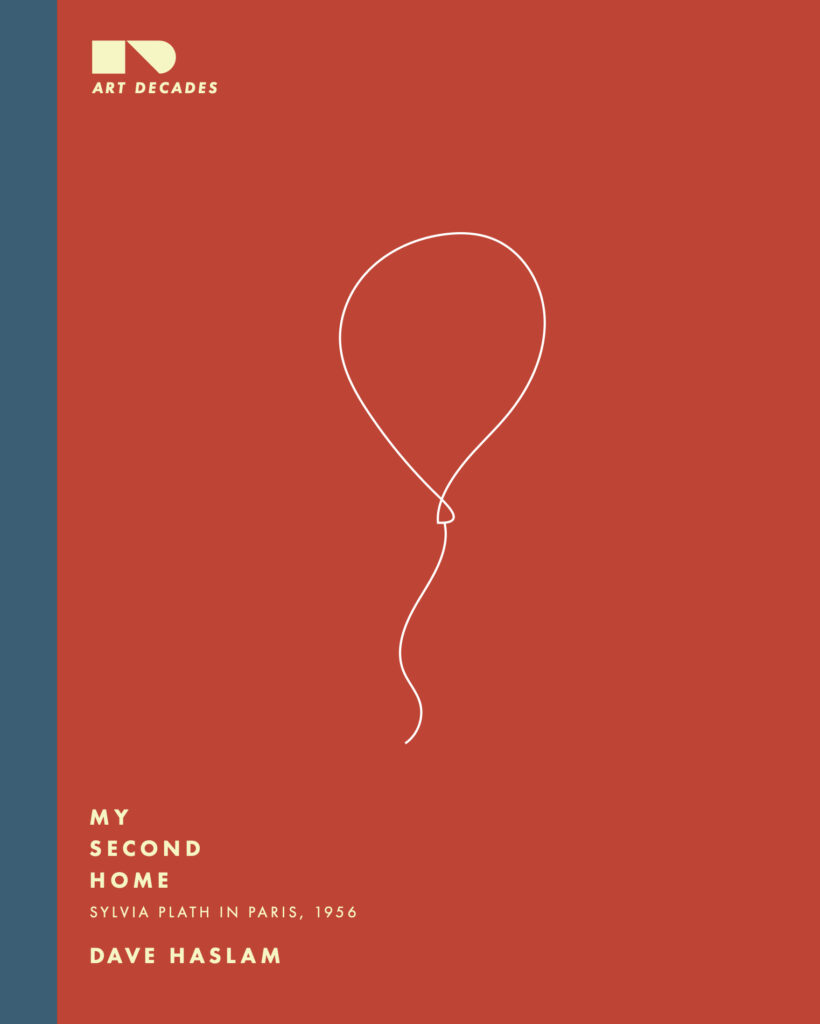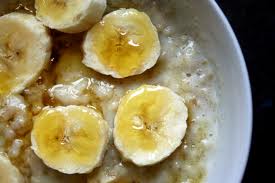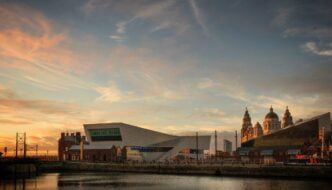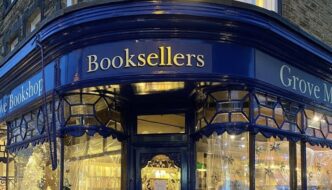‘My Second Home: Sylvia Plath in Paris, 1956’ – interview with Dave Haslam
October 20, 2020

Exuberance, liberation and elation. Three words I would never have used to describe Sylvia Plath, prior to reading ‘My Second Home’. Despite being one of the most admired confessional poets of the 20th century, often a singular, one-dimensional view is taken when looking back at Plath’s life, one full of sorrow and despair. A view that is often obsessed with the circumstances of her suicide and chaotic relationship with Ted Hughes. Dave Haslam counters this in book 4 of his ‘Art Decades’ collection, beautifully unveiling Plath’s plethora of personas. He skilfully manages to capture her moments of passion and joy but also moments of desolation. “Her mood was prone to oscillate between giddy optimism and bleak despair.”
Intricately, he recounts the tale of the young poet’s experiences in Paris 1956, alone, wandering and wondering. A defining time of her life. We discover how she filled those Paris days. Dinner with an Italian communist, embracing the idea of drunken afternoon sex, sketching in the park, and lying on her yellow bed listening to the sound of the rain as she considered decisions and future plans: in her phrase, “the fatal dance” of choices and alternatives. It is an incredibly moving and unique account of Plath, so deeply researched that it seems as if Haslam was by her side throughout.
One of the most emotive parts of the mini-book is Haslam exploring Sylvia’s relationship with Hughes. Juxtaposing their perceptions of Paris, Haslam unpicks the poem ‘Your Paris’, written by Hughes. For Sylvia, Paris was a place where she felt a sense of belonging, liberation and hope. For Ted, it was a place that was still recovering from Nazi occupation. As Haslam starkly notes, there is no shared Paris, not even an ‘our’ within the poem. This is significant.
“He knows the end of the story, we know the end of the story; but the end of the story is not the whole story.”
It was a pleasure to chat with Dave to explore ‘My Second Home: Sylvia Plath in Paris, 1956’ and the ‘Art Decades’ collection a little further.
Hey Dave, how are you doing?
Happy with my new book, unhappy I can’t do the reading tour because I like that personal interaction and getting to know the readers. But I’m OK, buoyed up by the book being appreciated.
Can you tell us a little about book 4 in the ‘Art Decades’ collection – ‘My Second Home’?
It explores the visits to Paris made by Sylvia Plath in 1956, especially the one at Easter that year. She’d been hoping on that particular visit to rekindle a long-standing romance with a man living in Paris called Richard Sassoon, but Richard had gone away for a while, apparently purposely to avoid seeing her. Her life was complicated. Within ten weeks she was married to Ted Hughes. The book explores what was going on and what she did in Paris once she’d realised she’d be alone; I loved finding out about the films she saw and the food she ate, and really got a sense of the complete person, and absolutely definitely so much more than a damaged, doomed figure.
Each mini-book in the ‘Art Decades’ collection tells a unique story rooted in cities. Where did the idea of the collection come from?
I wanted to find a way to write at length about people and subjects but in a smaller format than a traditional book length. Partly selfish – I can delve deep, research, write, and then I’m on to the next project; I thought that would be fun. But also because I think a small format – a 45-minute read – would suit some people. So pocket-sized seems to work. For me, it was important to stick to subjects I’m passionate about. The theme of cities in the series has emerged as I’ve been writing the books. For example, there’s the freedom, certainly the intensity, that comes with being a visitor to a city – that’s in the Courtney [Love] book and the Plath book – finding somewhere to uncage yourself.
Why Plath In Paris?
Many reasons, one being that her visit at Easter 1956 turned out to be transformational in that she had gone there looking for Richard but before she left she’d resolved to commit herself to Ted Hughes on her return. So I needed to know more about her experiences in Paris, and I loved finding out about the texture of her days – browsing the bookstalls along by the River Seine, spending time sketching in the Tuileries gardens – she loved to sketch. And she makes friends with an Italian communist journalist.
Where do you start your research for these books? Do you follow any specific process and what sources do you use?
I think the Plath book is the first one I’ve written that doesn’t include any interviews. When I wrote about Keith Haring I did a lovely, helpful interview with Samantha McEwen who was his friend and housemate. I did lots of important research reading Plath’s letters and journals but always for me in these books the key thing is to really get inside my head. To pour all the raw material into my brain and consider it all and let it all mix and mingle and see if there are interesting new connections with other writers or interesting ideas I can pursue or things that accessing my own emotional life might give weight to. I really want to access the deep stuff.
Am I right in thinking ‘My Second Home’ was written during lockdown? How did you find lockdown creatively?
March and April, and May too, I was too full of anxiety to properly focus; I think this was a common feeling. I’d written some of the book earlier in the year and then in June I began to find some headspace and a writing routine and it flowed, the writing flowed. In retrospect, I think that the world is traumatised at the moment, fraying at the edges, and actually that emotion and tension definitely got into the book in some incredible way.
How did you feel after finishing the book?
Super satisfied that I’d done the subject justice, and desperate for COVID to stop wrecking our lives and to be allowed to travel to Paris! I understand her passion for the city and I miss it.
What does ‘My Second Home’ mean to you?
It’s the idea of having somewhere you choose to be, that really seems good for you in some way when you visit, or where you feel you could live or thrive, if things were a bit different. Somewhere to escape to. Somewhere you feel you, or a version of you, is meant to be.
Since writing the mini-book, how has your perception of Plath changed?
This isn’t me being flippant, but I didn’t quite realise how into food and drink and shopping she was. She loved one particular street and went window shopping along there more than once. Shoes, accessories; all sorts. She loved the idea of being ‘chic’, in a classic Parisian way. There’s a moment in the journal she kept while she was in Paris when she has got ready for a night out and looks at herself in the mirror and decides her outfit makes her look ‘chic’. It’s sweet. I could imagine her thinking, yes, I’ll Instagram that look. I found out what her favourite lipstick colour was – and chose that as the colour for the front of the book.
How do you think she would have liked to be remembered?
As a great, unique, writer – which is what she is remembered for, although I think we need to strip away some of the one-dimensional mythologising that overshadows the work. Over the years portrayals of her have accentuated instability, tragedy, and so on. I’m not minimising her pain and we know she suffered depression, but in plenty of parts of my book we can feel her happiness and elation too.
What would you like readers to take from the book?
A deeper knowledge of a three-dimensional Plath and also be inspired by my enthusiasm for the subject. For me, it was a journey of discovery and I hope that my love for Sylvia and honesty and life is there on the page for readers.
Can you reveal any ideas for the next book in the series?
I’ve been looking for a way of writing about the very early 1970s in Britain, the era when the Sixties’ peace and love dreams had disappeared and there were a lot of drugs and anger in the air in Britain. I have a specific Manchester angle this time. It’ll be book 5. I’m not saying any more though, it’s not really formulated fully. I think there will be eight in the series. And then we’ll make a special box to collect them all in.
Published by independent Manchester-based Confingo, ‘My Second Home: Sylvia Plath in Paris, 1956’, as well as the rest of the Art Decades collection, is available at https://www.confingopublishing.uk/
Filed under: Written & Spoken Word
Tagged with: 1956, Art Decades, book, city, Culture, Dave Hasslam, drink, food, history, lockdown, paris, poems, poet, research, romance, shopping, story, Sylvia Plath, Ted Hughes, writer



Comments